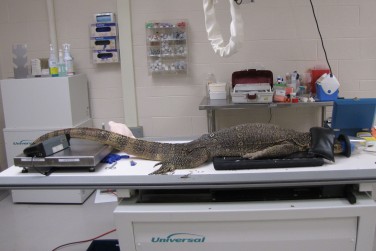Beth Wallace is the Manager of Sustainability for the Detroit Zoological Society.
Have you ever wondered what happens with all of the poo at the Detroit Zoo? With more than 2,600 animals in residence, you can probably imagine that a staggering amount of manure is generated – nearly 500 tons each year, in fact.
 As part of its Greenprint initiative, the Detroit Zoological Society has plans to build a biodigester that will convert all of our animal manure – and other organic waste – into soil, biogas and organic liquid fertilizer. This will be the first anaerobic digester at any zoo in the U.S. and we need your support to make this project a dung deal.
As part of its Greenprint initiative, the Detroit Zoological Society has plans to build a biodigester that will convert all of our animal manure – and other organic waste – into soil, biogas and organic liquid fertilizer. This will be the first anaerobic digester at any zoo in the U.S. and we need your support to make this project a dung deal.
How the system works:
- Every week we will collect manure from each of our animal habitats.
- The manure will then be placed in one of the four biodigester holding chambers. All four chambers will be sealed shut when product is not being moved.
- Once a chamber is completely full, we will spray it with microorganisms, air-tight seal the chamber and essentially bake the material for 30-60 days.
- While the product breaks down, methane is released and captured in a biogas bag above. The Zoo will then run that biogas to a generator at the nearby animal hospital, which will be used as a renewable energy source.
- Once the material has completed its cycle, our landscaping team will then utilize the remaining soil and organic fertilizer throughout our 125 gardens.
 The biodigester will not only provide the Zoo with a full-circle approach to waste management, but it will also demonstrate to our region a practical, waste-to-energy system that could be replicated by many businesses in the area, including microbrews, farmers markets and even schools.
The biodigester will not only provide the Zoo with a full-circle approach to waste management, but it will also demonstrate to our region a practical, waste-to-energy system that could be replicated by many businesses in the area, including microbrews, farmers markets and even schools.
While we are well on our way to meeting our funding goals, we still need a little help to make this project a reality. To show your support, please visit our crowdfunding site, at Patronicity.com/DetroitZoo.
– Beth Wallace



 How’d you do? You probably found that you know most, if not all, of the phrases. This just reiterates that we often utter these idioms without thinking about their underlying meaning. Let’s work together to create new cultural norms. For example, “kill two birds with one stone” can become “feed two birds with one hand”, and “more than one way to skin a cat” can become “more than one way to pet a cat”.
How’d you do? You probably found that you know most, if not all, of the phrases. This just reiterates that we often utter these idioms without thinking about their underlying meaning. Let’s work together to create new cultural norms. For example, “kill two birds with one stone” can become “feed two birds with one hand”, and “more than one way to skin a cat” can become “more than one way to pet a cat”.


